
How to Use usb-c famale connector: Examples, Pinouts, and Specs
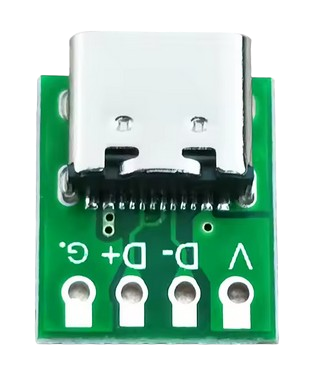
 Design with usb-c famale connector in Cirkit Designer
Design with usb-c famale connector in Cirkit DesignerIntroduction
The USB-C female connector is a versatile and widely adopted interface designed for connecting USB-C cables and devices. It features a reversible design, allowing users to insert the connector in either orientation, eliminating frustration during connection. This connector supports high-speed data transfer, power delivery, and video output, making it a key component in modern electronics.
Explore Projects Built with usb-c famale connector
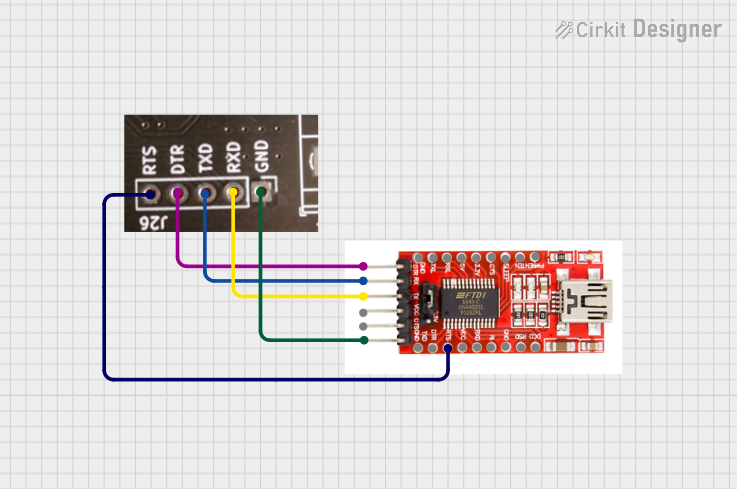
 Open Project in Cirkit Designer
Open Project in Cirkit Designer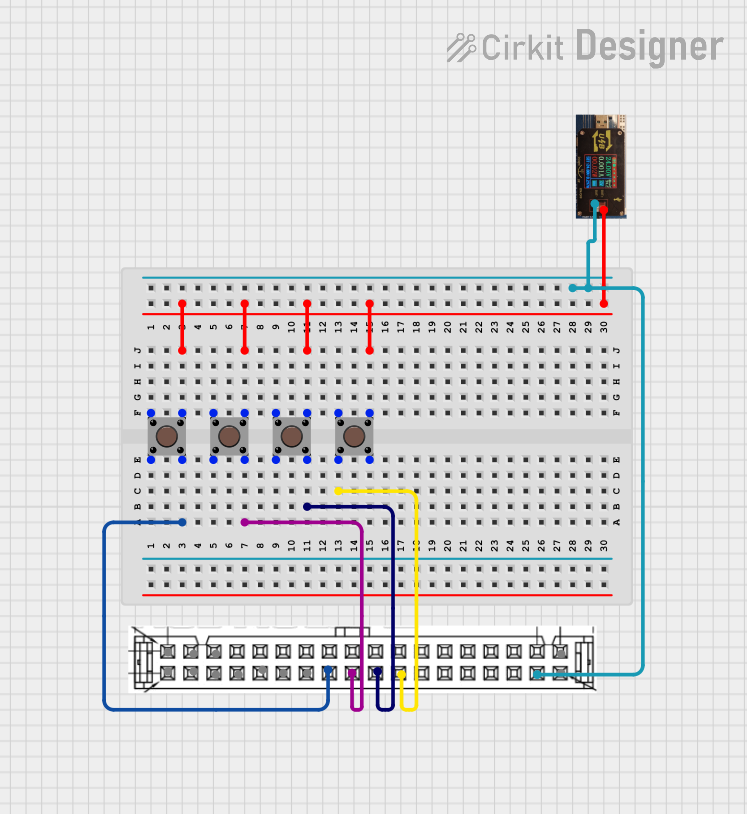
 Open Project in Cirkit Designer
Open Project in Cirkit Designer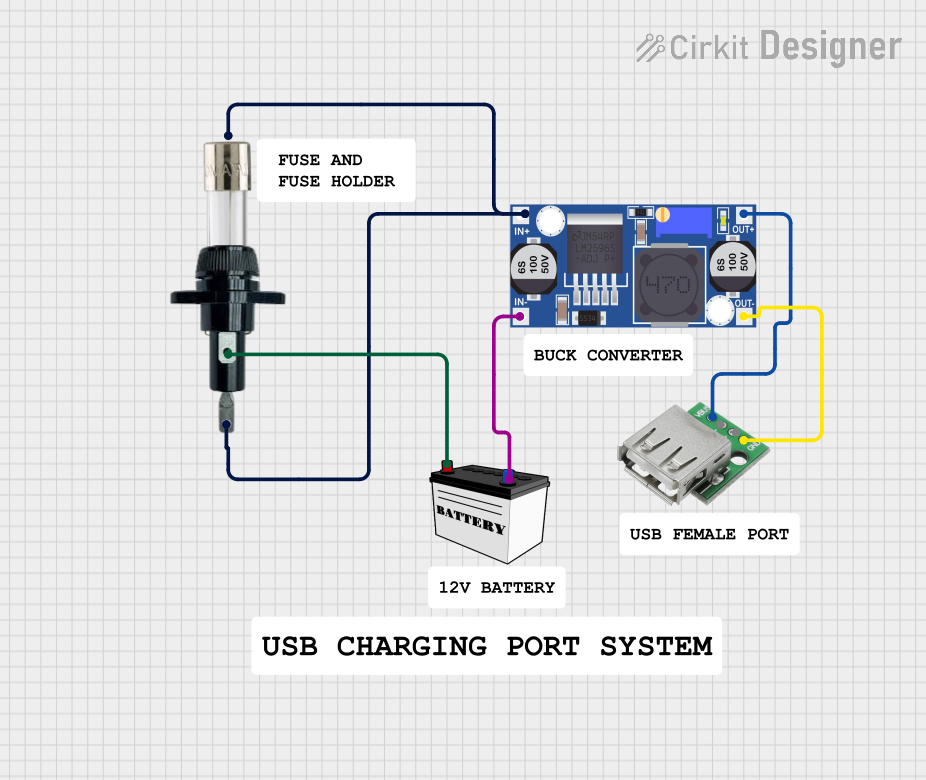
 Open Project in Cirkit Designer
Open Project in Cirkit Designer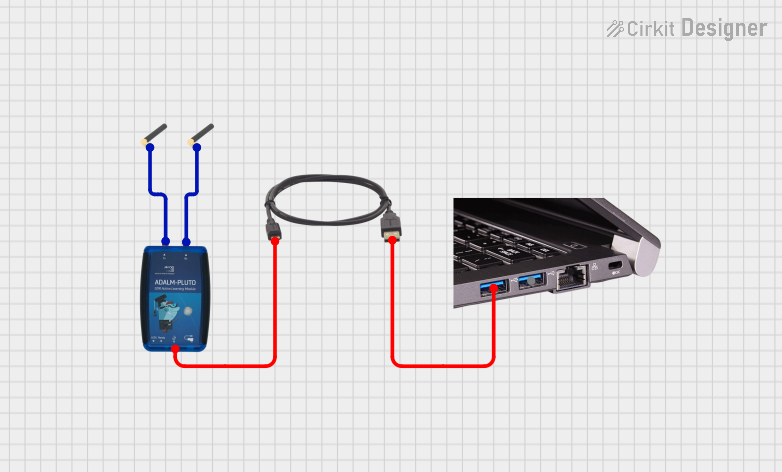
 Open Project in Cirkit Designer
Open Project in Cirkit DesignerExplore Projects Built with usb-c famale connector

 Open Project in Cirkit Designer
Open Project in Cirkit Designer
 Open Project in Cirkit Designer
Open Project in Cirkit Designer
 Open Project in Cirkit Designer
Open Project in Cirkit Designer
 Open Project in Cirkit Designer
Open Project in Cirkit DesignerCommon Applications and Use Cases
- Smartphones and Tablets: Used for charging, data transfer, and audio/video output.
- Laptops and Desktops: Enables high-speed data transfer, power delivery, and external display connections.
- Peripheral Devices: Found in external hard drives, docking stations, and USB hubs.
- Embedded Systems: Used in custom electronics projects for power and data interfacing.
Technical Specifications
The USB-C female connector adheres to the USB Type-C standard, offering robust performance and compatibility with a wide range of devices.
Key Technical Details
- Manufacturer: USB Type C
- Part ID: USB Type C
- Voltage Rating: Up to 20V (for USB Power Delivery)
- Current Rating: Up to 5A (depending on cable and device compatibility)
- Data Transfer Speeds: Up to 10Gbps (USB 3.1 Gen 2) or higher for newer standards
- Operating Temperature: -40°C to 85°C
- Durability: Rated for 10,000 insertion/removal cycles
- Pin Count: 24 pins
Pin Configuration and Descriptions
The USB-C female connector has 24 pins, symmetrically arranged to support its reversible design. Below is a simplified pinout table:
| Pin Name | Description | Notes |
|---|---|---|
| GND | Ground | Common ground for power and signals |
| VBUS | Power Supply | Provides power (up to 20V, 5A) |
| CC1, CC2 | Configuration Channel | Used for cable orientation and power negotiation |
| D+, D- | USB 2.0 Data Lines | Legacy USB 2.0 data transfer |
| TX1+, TX1- | SuperSpeed Differential Pair 1 | High-speed data transfer (TX direction) |
| RX1+, RX1- | SuperSpeed Differential Pair 2 | High-speed data transfer (RX direction) |
| TX2+, TX2- | SuperSpeed Differential Pair 3 | High-speed data transfer (TX direction) |
| RX2+, RX2- | SuperSpeed Differential Pair 4 | High-speed data transfer (RX direction) |
| SBU1, SBU2 | Sideband Use | Used for alternate modes (e.g., audio) |
| Shield | Connector Shield | Provides EMI protection |
Usage Instructions
How to Use the USB-C Female Connector in a Circuit
- Soldering: The USB-C female connector is typically mounted on a PCB. Ensure proper alignment and solder all pins securely to avoid loose connections.
- Power Delivery: If using USB Power Delivery (PD), include a USB PD controller IC in your circuit to negotiate voltage and current levels with the connected device.
- Data Lines: Connect the D+, D-, and SuperSpeed differential pairs (TX/RX) to the appropriate data-handling ICs or microcontrollers.
- Configuration Channels (CC1, CC2): Use pull-up or pull-down resistors on the CC pins to indicate the power source or sink role of your device.
- Shielding: Connect the shield pin to the ground plane for improved electromagnetic interference (EMI) protection.
Important Considerations and Best Practices
- Reversible Design: Ensure both CC1 and CC2 pins are properly connected to handle the reversible nature of the connector.
- Power Delivery: Use appropriate overcurrent and overvoltage protection circuits to safeguard your device.
- High-Speed Signals: Route high-speed differential pairs (TX/RX) with controlled impedance to maintain signal integrity.
- Thermal Management: If using high power (e.g., 20V, 5A), ensure adequate thermal dissipation to prevent overheating.
Example: Connecting to an Arduino UNO
While the Arduino UNO does not natively support USB-C, you can use a USB-C breakout board to interface with it. Below is an example of using the USB-C connector for power input:
// Example: Using USB-C to power an Arduino UNO
// Connect the VBUS pin of the USB-C connector to the Arduino's VIN pin.
// Connect the GND pin of the USB-C connector to the Arduino's GND pin.
void setup() {
// No specific setup required for power input
}
void loop() {
// Your main code here
}
Troubleshooting and FAQs
Common Issues Users Might Face
- Loose Connections: Poor soldering can lead to intermittent connections.
- Solution: Re-solder the pins carefully, ensuring proper alignment and secure joints.
- Overheating: Excessive current draw can cause the connector to overheat.
- Solution: Verify that the connected device does not exceed the current rating of the connector.
- Data Transfer Issues: High-speed data transfer may fail due to improper routing of differential pairs.
- Solution: Ensure controlled impedance and minimize trace lengths for TX/RX pairs.
- Power Delivery Not Working: The device does not negotiate the correct voltage/current.
- Solution: Check the configuration of the CC pins and ensure the USB PD controller is functioning correctly.
FAQs
Q: Can I use the USB-C female connector for USB 2.0 devices?
A: Yes, the USB-C connector is backward compatible with USB 2.0. Use the D+ and D- pins for data transfer.Q: How do I handle the reversible nature of the connector?
A: Connect both CC1 and CC2 pins to ensure proper orientation detection.Q: What is the maximum power I can draw from this connector?
A: The connector supports up to 20V and 5A (100W) with USB Power Delivery, provided the cable and device are compatible.Q: Do I need to connect all 24 pins for basic functionality?
A: No, for basic power and USB 2.0 data transfer, only a subset of pins (VBUS, GND, D+, D-, CC) is required.
This documentation provides a comprehensive guide to understanding and using the USB-C female connector effectively in your projects.